Affiliate links on Android Authority may earn us a commission. Learn more.
Behind the scenes at realme's manufacturing facility
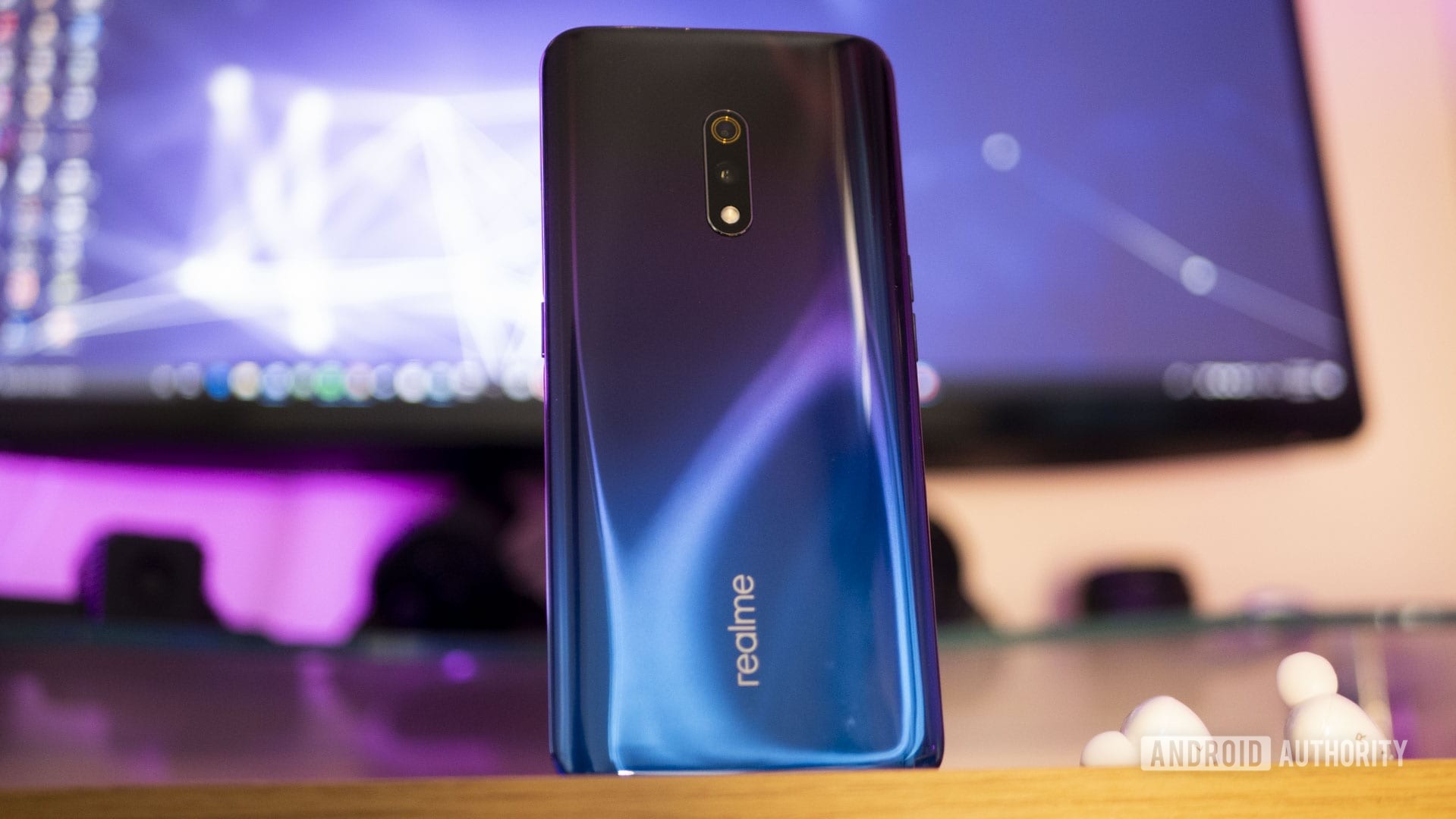
Just about a year ago, Realme spun off from OPPO and decided to become a full-fledged smartphone player in its own right. Since then, the company has grown by leaps and bounds and can today be called one of the few credible competitors to Xiaomi in India. Indeed, realme has already climbed up to the fourth position in the Indian smartphone ecosystem. With a seven percent share of the market, realme’s meteoric rise can be attributed to solid products, excellent marketing, and an understanding of what the audience demands.
In our own review, we’ve called the realme 3 Pro an excellent option for anyone who does not want to deal with the ads and somewhat bloated experience of MIUI. But before you get the phone in hand, there is a whole lot more that goes on behind the scenes.
Following the China launch of the realme X, we spent a day touring realme’s production facility in Dongguan, China and met the team behind the devices’ cameras.
It would be safe to call Shenzhen the manufacturing hub of the world.
Shenzhen is known as the Silicon Valley of the East and for good reason. Some of the largest consumer technology brands are based out of the city. It would also be safe to call it the manufacturing hub of the world. Combined with nearby Dongguan, a vast majority of smartphones, laptops, and consumer products are manufactured here under the supervision of hundreds of thousands of workers. Despite spinning off from OPPO early last year, realme continues to use OPPO’s manufacturing facilities located an hour’s drive from Shenzhen.
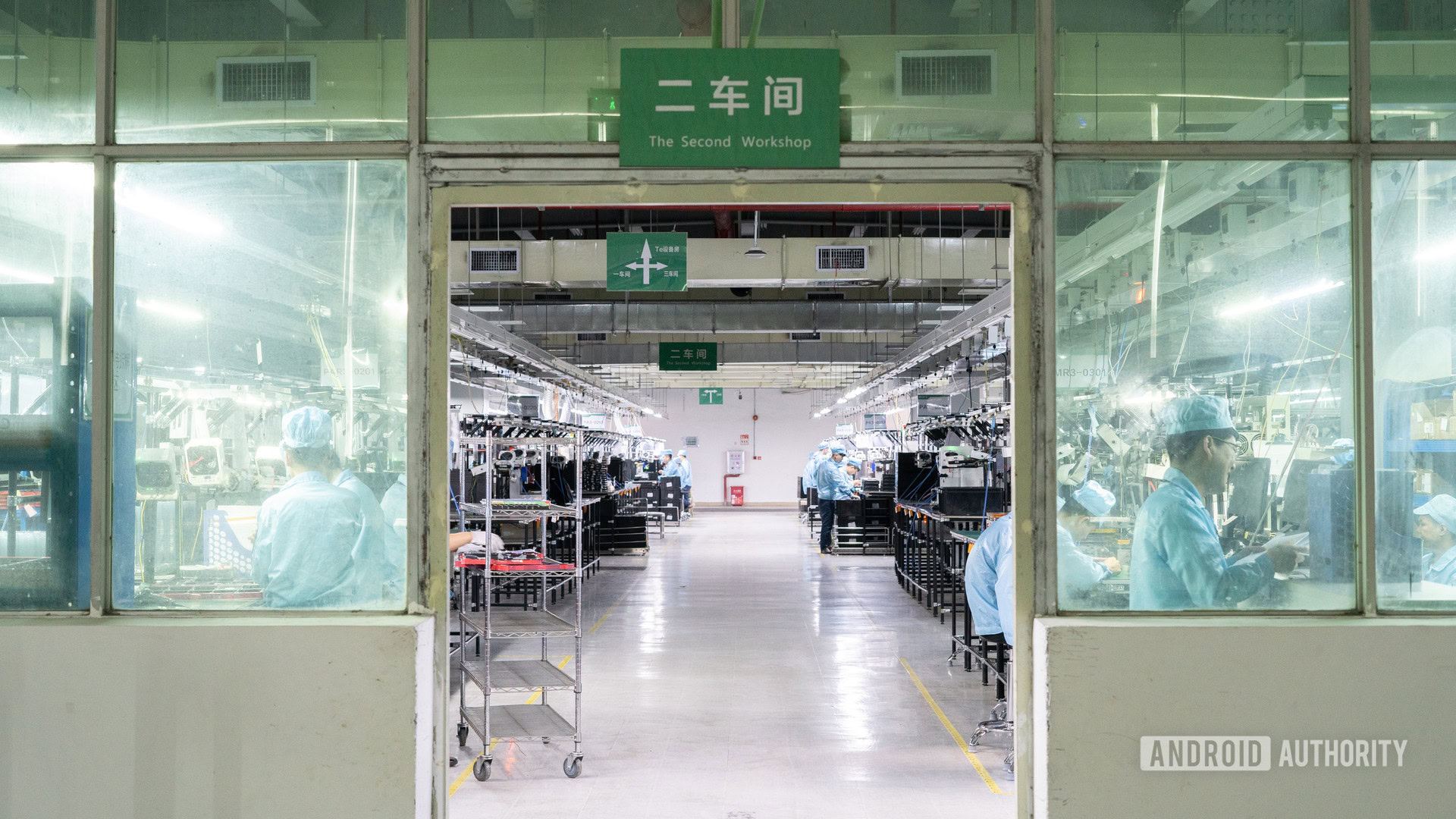
Our tour starts with a peek at SMT manufacturing. Short for surface-mount technology, this is where the magic happens and the heart of the phone is put together. This part of the production process is almost entirely automated and makes use of sophisticated machines that create four printed circuit boards (PCBs) at a time.
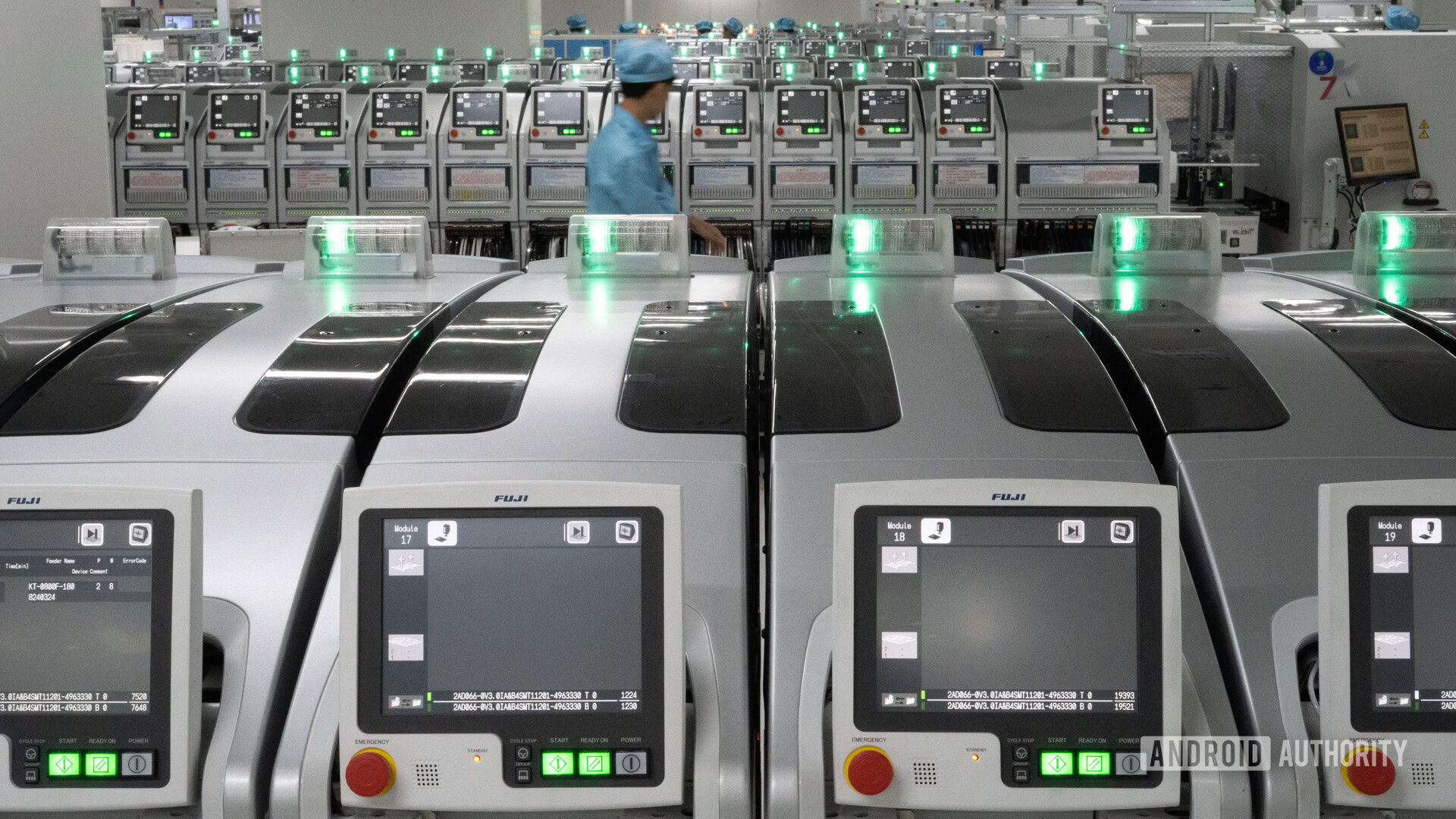
With 47 production lines in a room, and two of them dedicated exclusively to realme devices, production runs ahead at full steam. Each line is capable of producing 10,000 PCBs a day. This part of the manufacturing process revolves around the printer line. The process takes about an hour, as it goes through multiple phases of printing and curing.
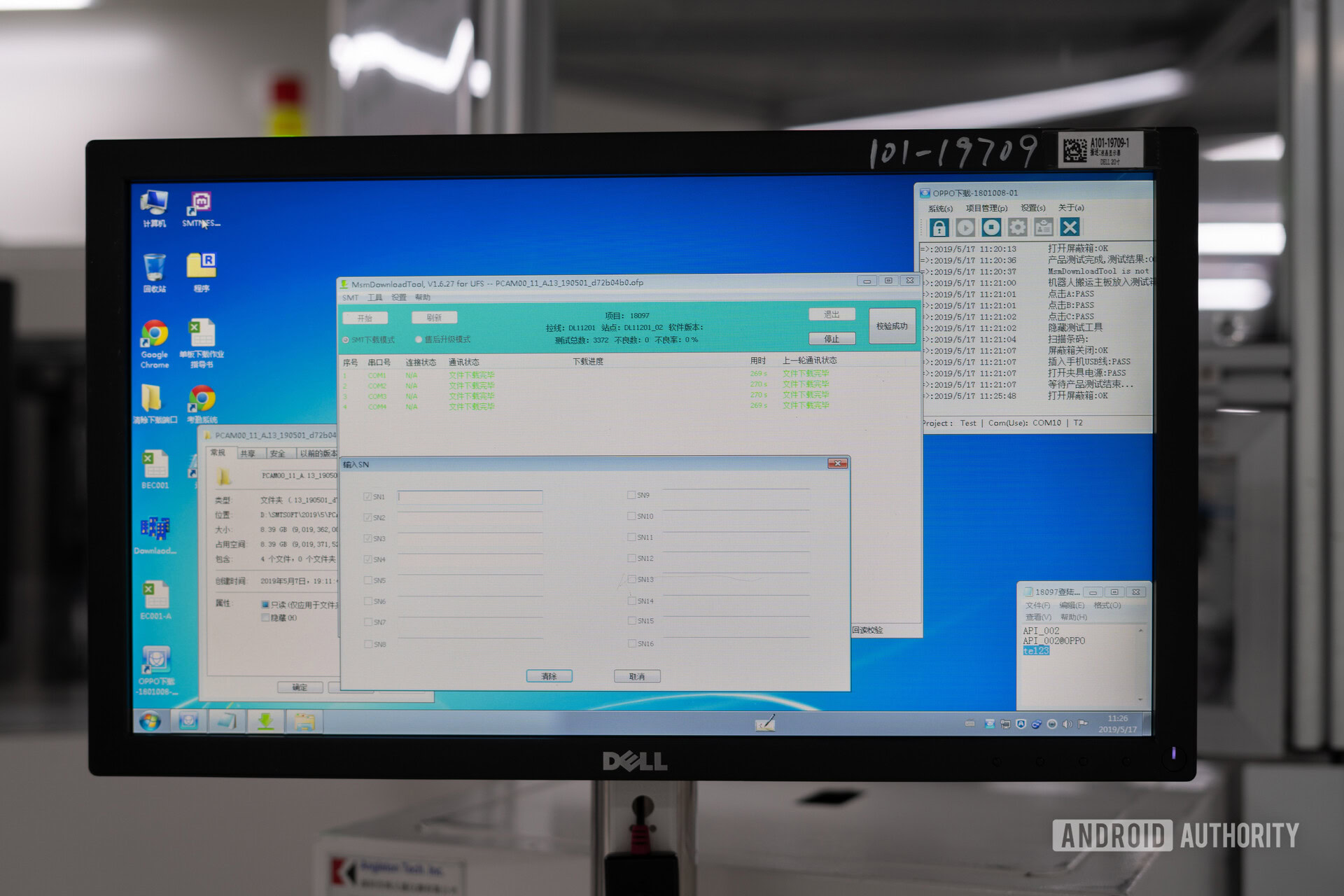
Before the PCB moves into the assembly process, the operating system is burned onto the ROM. As you’ll notice in the image above, at this point, the PCBs are still connected four to a unit and undergo the ROM burning process simultaneously.
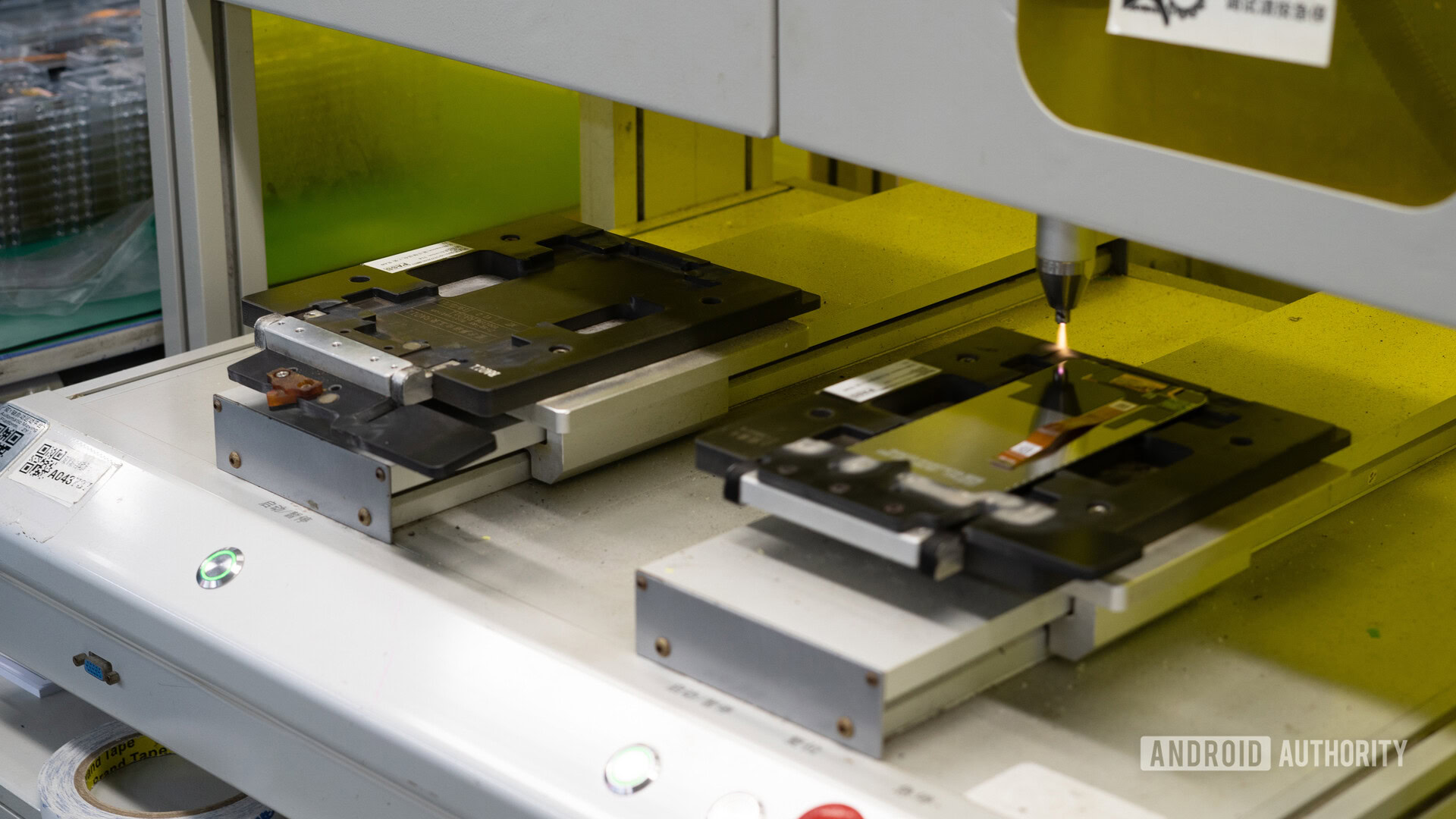
Towards the end of the line and before moving into assembly, the PCB is subject to a high temperature torch that precisely cuts out the edges and ensures there are no rough edges to be found. At this point, we get four individual PCBs ready to go into smartphones.
Of course, this doesn’t mean that the entire production line is held up while four motherboards are being manufactured. The entire line is segmented and a fresh batch moves up as soon as the first batch is ready to move ahead in the production process.
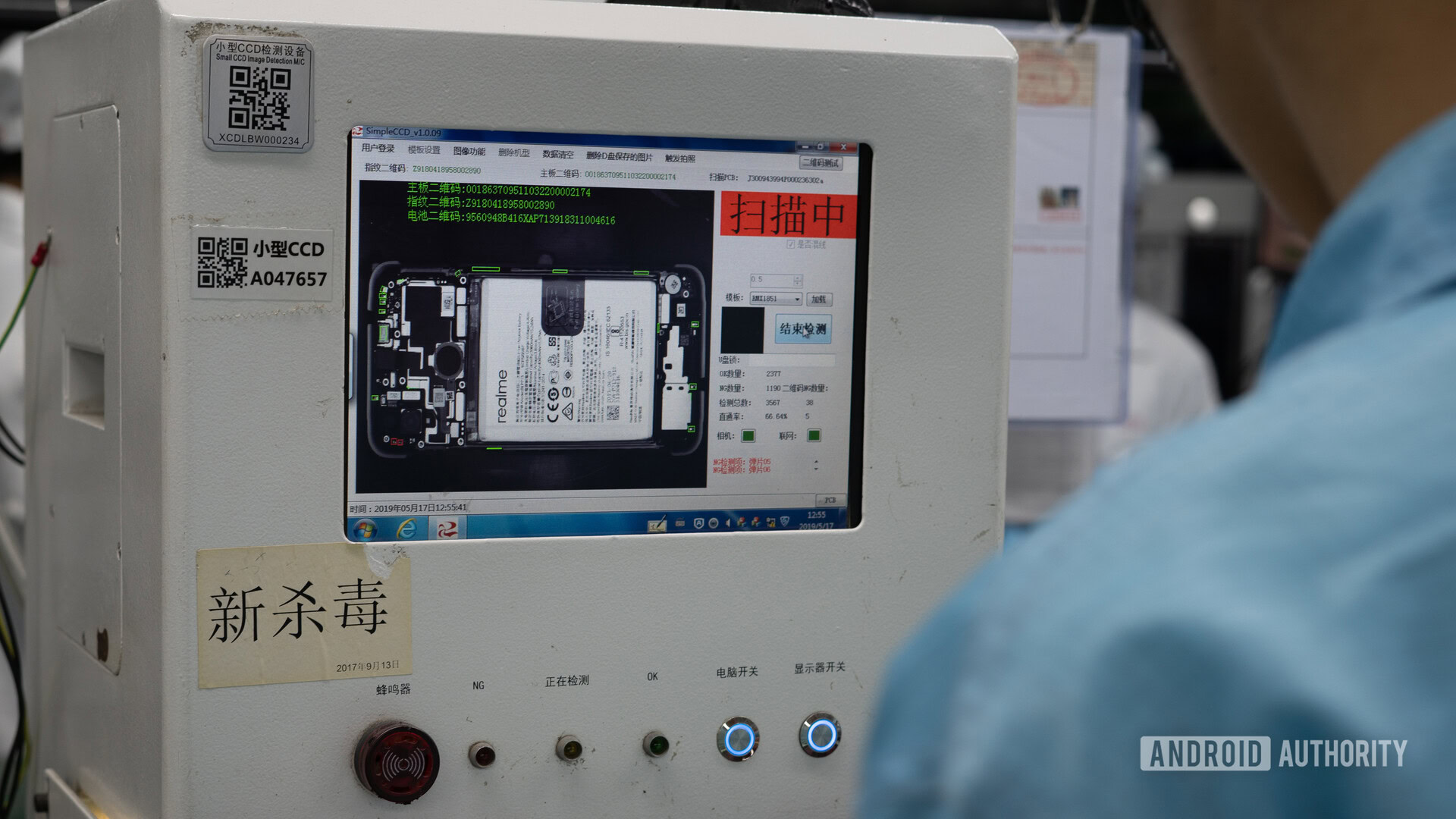
Once all the components are attached, there is a round of inspections with both machines and human supervisors working in tandem to ensure that none of the cables have been left unattached and that the battery has been put in the right way!
Quality analysis is a clinical affair involving a lot of testing and even more data logging.
The next part of our tour brought us to the testing and quality analysis section of the production facility. You would be remiss to think that the employees here get to have a lot of fun tossing phones around and running drop tests all day long. Unlike the rather unscientific testing we often come across on the internet, this is a very clinical affair with precise tolerances and constant logging of data.
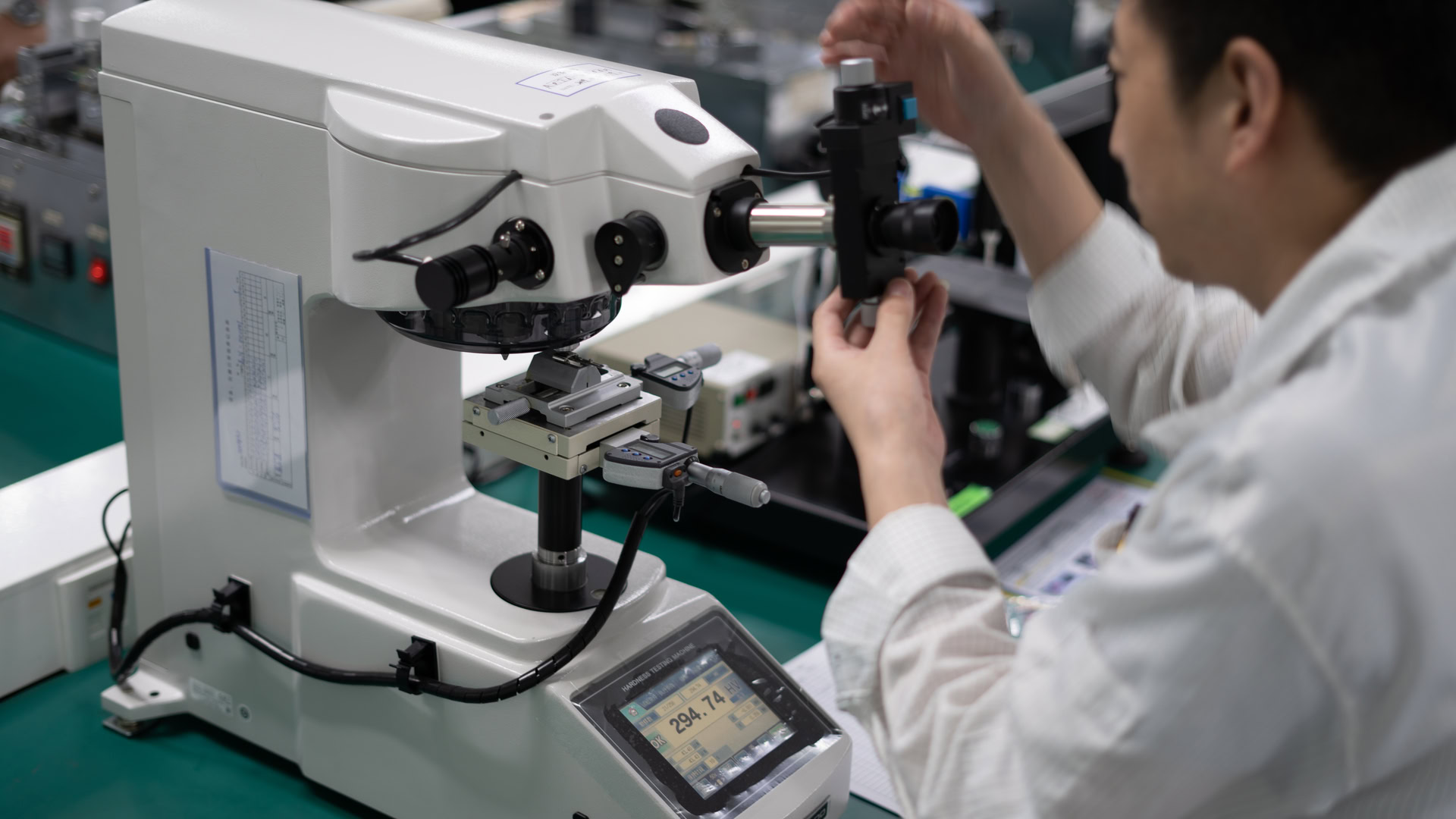
300 phones out of every batch of 30,000 are sacrificed to the altar of quality testing and analysis. Up above you can see an employee testing out the USB port on a phone. This test is repeated 10,000 times to check for possible failures.
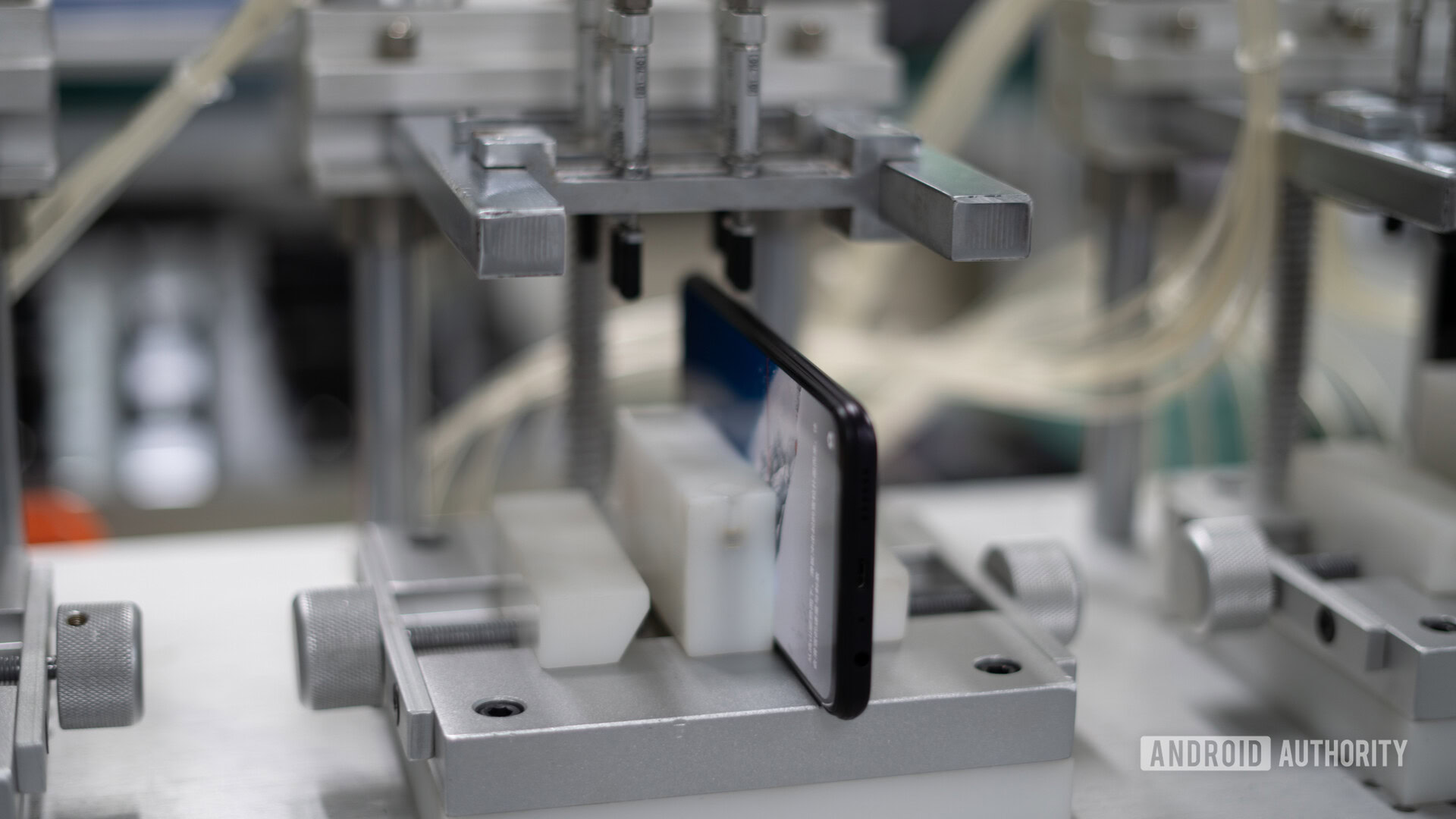
In fact, there is an entire gamut of tests that phones are subjected to, with some that last longer than others. Up above is the button test where a load of one kilogram smashes into the power button 100,000 times.
The scratch and scuff test is another interesting one where the phone is, well, scrubbed against a denim surface to see how it copes up. There is, of course, a drop test as well that changes the test parameters from 1 to 1.8 meters to test drops from multiple heights.
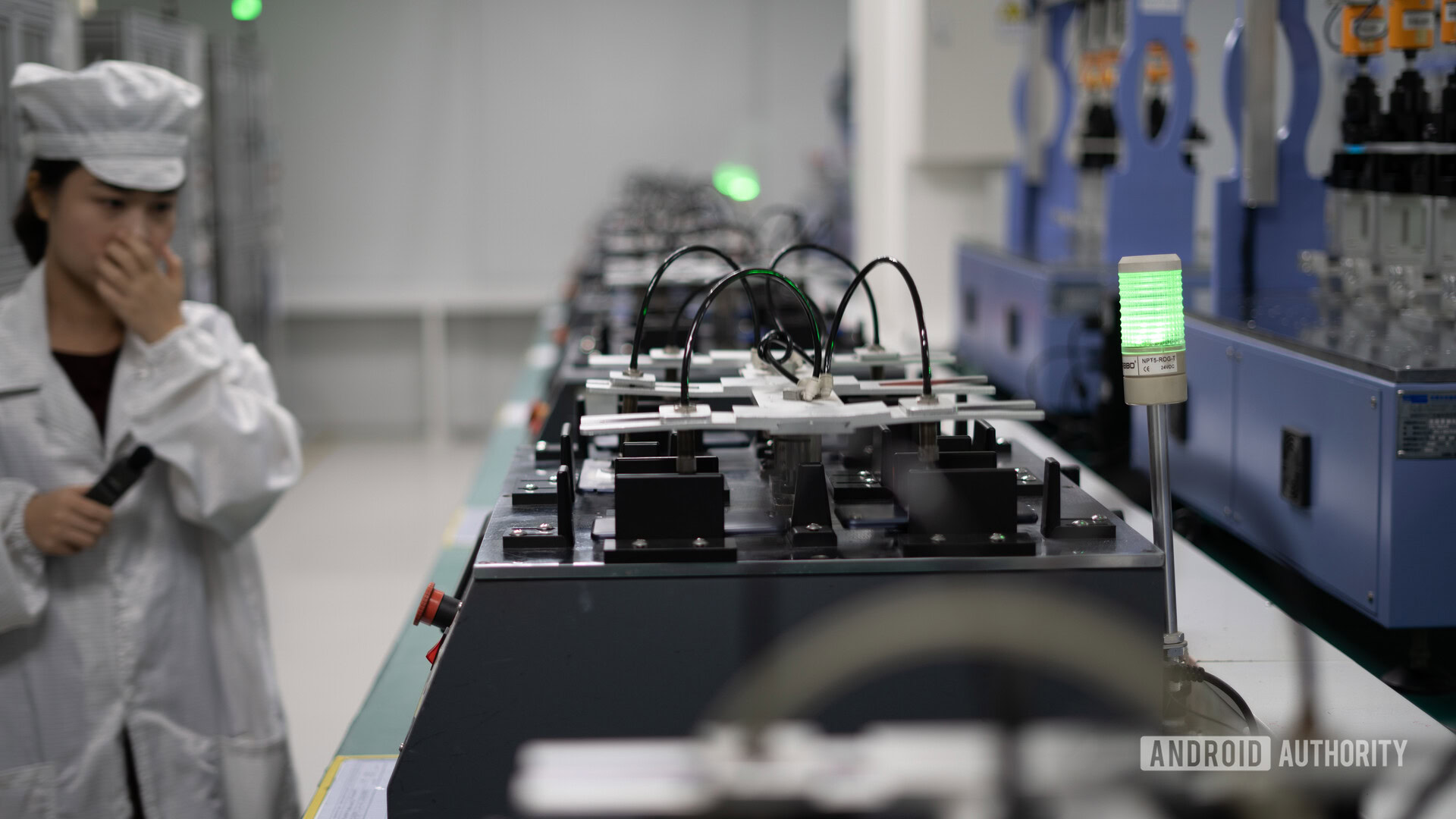
Every single test is accounted for and logged to ensure that proper data is being collected. The tumble test is another interesting one that simulates a phone slipping out from your hand and falling down a kerb. The tumbler tosses the phone from a height of one meter and keeps repeating this till all the test protocols are met.
There is something cathartic about watching a phone being dropped 40,000 times.
A micro-drop test drops a phone over forty thousand times from a 10-centimetre height. Really, the attention to detail and to simulate as many real-world circumstances as possible is impressive to see from an engineering perspective. Truth be told, there is something cathartic about watching a phone being dropped repeatedly with mechanical precision.
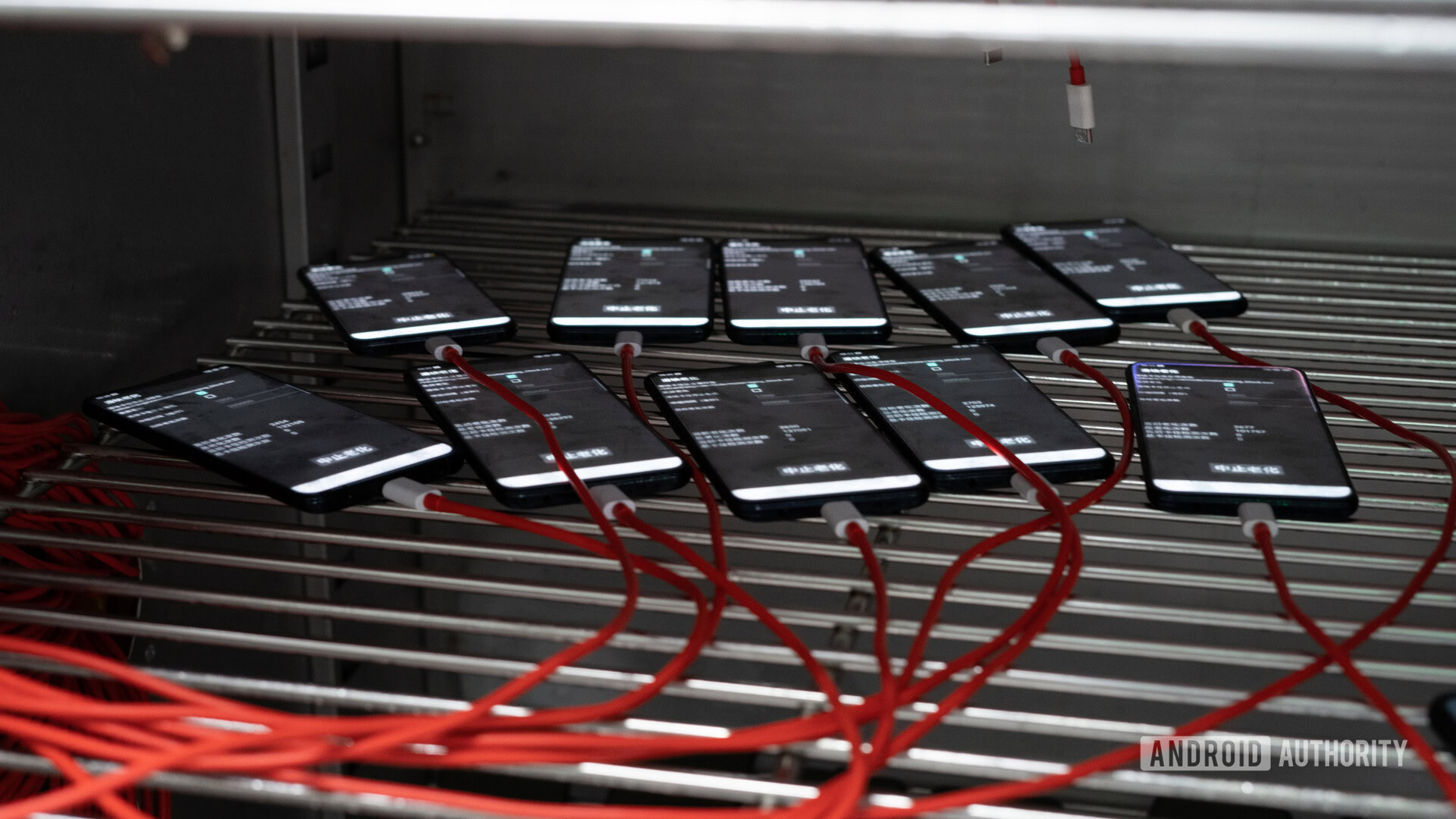
The tests don’t end just there. There are machines that simulate extreme heat up to 50 degree Celsius as well as frigid temperatures down to -15 degree Celsius. The temperature swings around within a matter of minutes and truly puts phones through their paces. There are also machines that can simulate extreme humidity, as well as dry weather conditions.
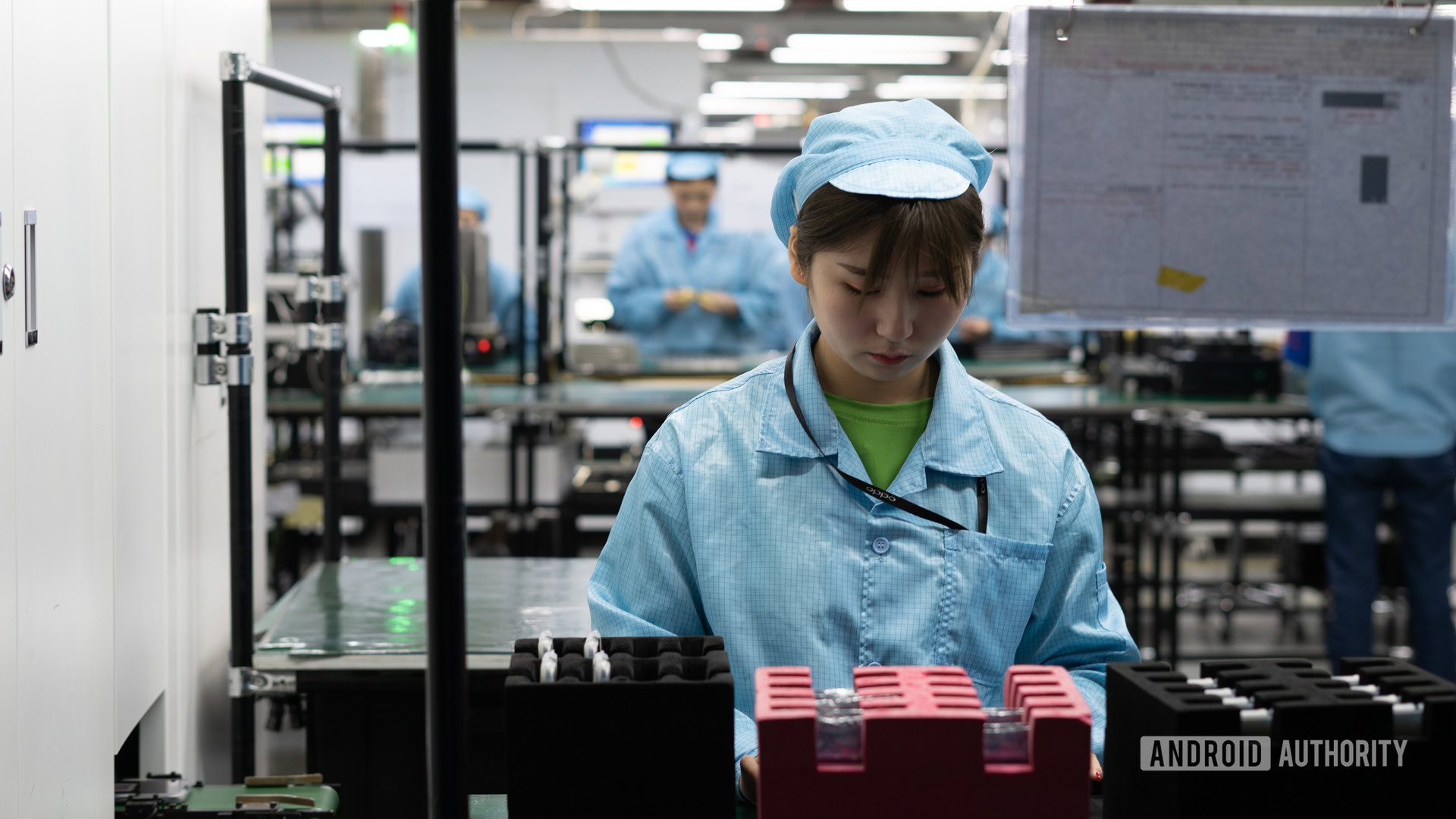
Once the tests are completed, individual phones are examined by hand for faults and breaks that are duly noted. The tests ensure quality control, but are also responsible for improving manufacturing processes to reduce the number of phones that might break down.
Later in the day, we had an opportunity to sit down with the camera team at realme. The company has developed quite a following for itself on account of the imaging prowess of its hardware. The realme 3 Pro captures some of the best images in the mid-range segment and the realme X is poised to kick this up a notch with a renewed focus on low light captures and noise free images.
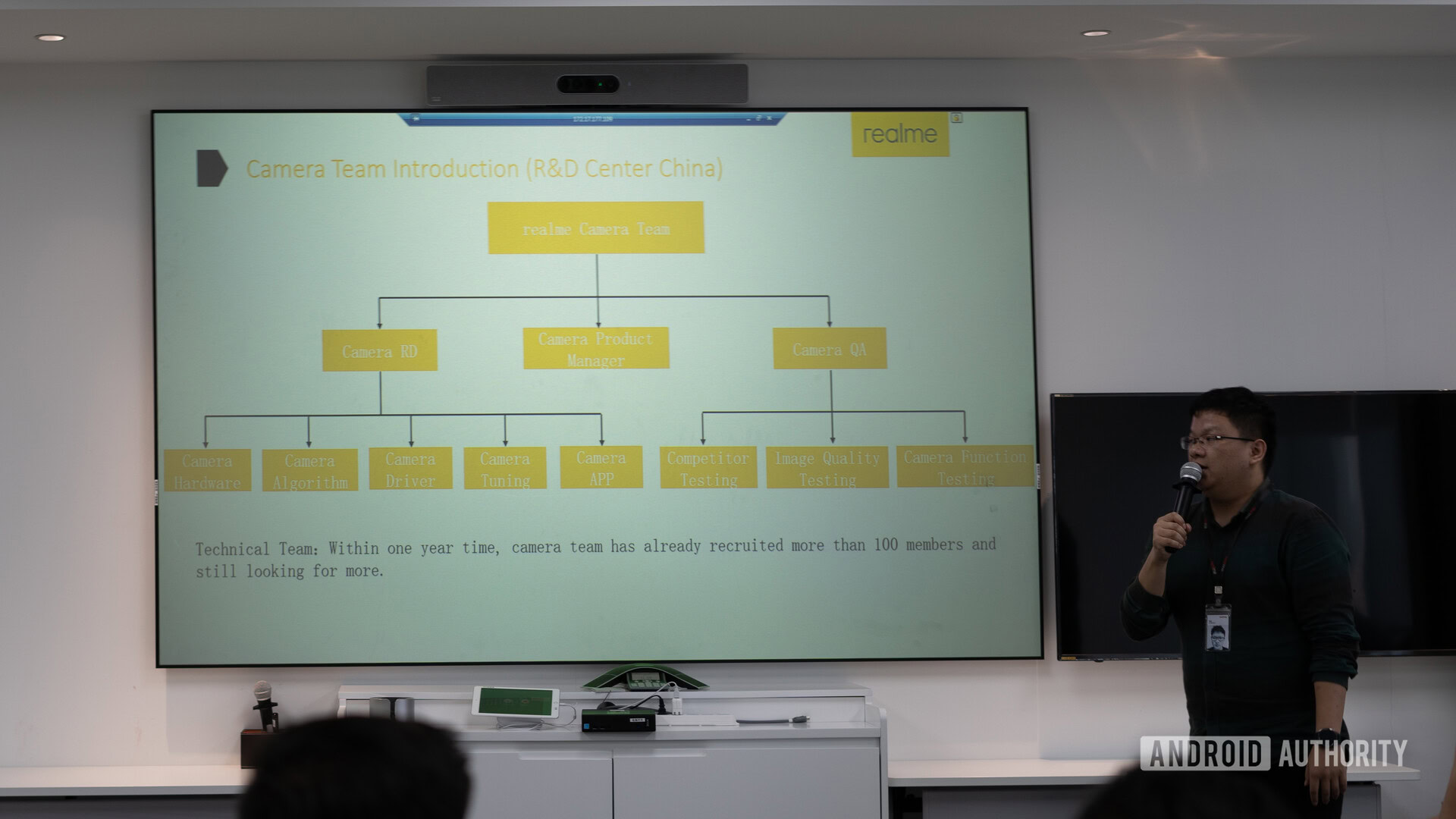
With a team of almost a hundred engineers and testers in the camera team, it is clear that this is where realme wants to differentiate from the competition. Given that the primary market for realme has so far been India, it comes as no surprise that most of the data for tuning images has come from India.
Realme’s marketing efforts have focused a lot on youth and college-going students in India. It is this same audience that has been roped in to help with research and to fine tune final image output. For the onboard AI algorithms too, realme is working with Indian models and datasets to define color tuning. For the realme 3 Pro, the company used an image data set of over 100,000 images to tune the algorithms. The majority of these images came from India.
None of this is exclusive to realme, but it does give us a unique insight into the processes that go behind developing the imaging capabilities of your favorite smartphone.
Learning from the best in the business has definitely helped realme improve its smartphones.
Talking about camera performance, the engineering team at realme pointed out how it chose the best camera phones out there as benchmarks. The Pixel 3, unsurprisingly, became the lead benchmark against which the 3 Pro’s imaging performance was gauged.
While daylight performance is often easier to tune, low light is where budget smartphones fail. Like the Pixel’s Night Sight mode, Nightscape mode on realme’s devices was developed to fuse up to eight images to reduce noise, enhance details in shadows and to make sure that highlights don’t get blown out. As it turns out, learning from the best in the business has definitely helped realme enhance camera performance. We’ve got a whole host of camera samples in our realme X hands-on.
While we often end up taking our phones for granted, it is enlightening to see the efforts of hundreds or even thousands of people behind the scenes. From the initial sketches by the design team to the efforts of the various software departments and camera teams, right down to the assembly line workers, it is incredible to see the processes behind manufacturing every single device. The fact that the glorious slab of glass and metal that you are reading this piece on was, for the most part, put together by another human being has to be seen to be believed.